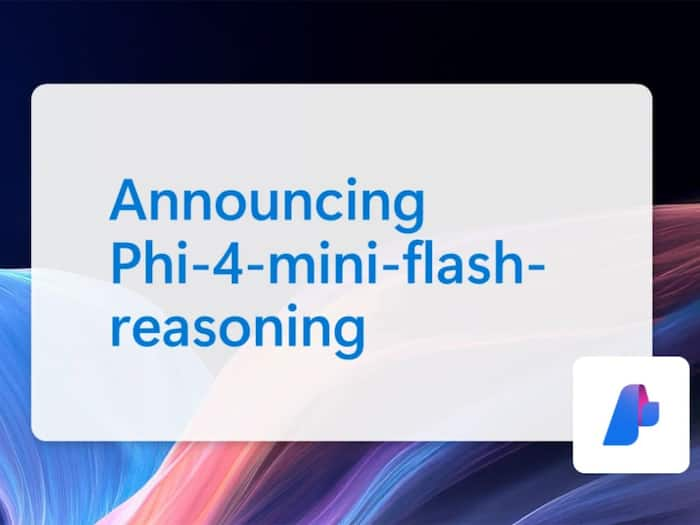
Written By Shubham Arora
Edited By: Shubham Arora | Published By: Shubham Arora | Published: Jul 11, 2025, 06:26 PM (IST)


Microsoft has launched a new AI model, the Phi-4-mini-flash-reasoning. Designed for speed, efficiency, and smart reasoning – especially in low-resource environments like mobile apps and edge devices – this compact model builds on the previous Phi-4-mini but introduces a new architecture which promises to delivers up to 10x higher throughput and 2–3x lower latency. Also Read: Windows 10 And Windows 11 Hit By High-Severity Security Flaw: CERT-In Issues Warning
Phi-4-mini-flash-reasoning is a 3.8 billion parameter open-source model optimised for math and logical reasoning. It can handle a 64,000-token context length, making it capable of processing large chunks of information quickly and efficiently. The model is fine-tuned on high-quality synthetic data, ensuring accuracy and reliability in real-world use cases. Also Read: Microsoft Blocks Largest-Ever Cloud DDoS Attack Aimed At Australian Website: Here’s What Happened
This new model is perfect for developers and enterprises needing fast, scalable performance without sacrificing logic. It’s already available across Azure AI Foundry, NVIDIA API Catalog, and Hugging Face. Also Read: Microsoft Users At High Risk: Indian Govt Recommends Updating Your Devices Now
At the heart of Phi-4-mini-flash-reasoning is Microsoft’s new SambaY architecture, which introduces a clever mechanism called the Gated Memory Unit (GMU). This innovation allows the model to share information between layers more efficiently, which results in faster decoding, better memory management, and improved accuracy over long texts.
The model combines different elements like Mamba (a state space model), Sliding Window Attention (SWA), and full-attention layers to create a hybrid system. This setup boosts long-context reasoning and enhances performance across a wide range of AI tasks while keeping speed a top priority.
Thanks to its low-latency and high-throughput performance, the model is well-suited for:
Phi-4-mini-flash-reasoning is developed under Microsoft’s Responsible AI principles, ensuring it meets high standards for security, safety, fairness, and transparency. It uses safety techniques like Supervised Fine-Tuning (SFT), Direct Preference Optimisation (DPO), and Reinforcement Learning from Human Feedback (RLHF) to minimise harmful outputs and improve reliability.